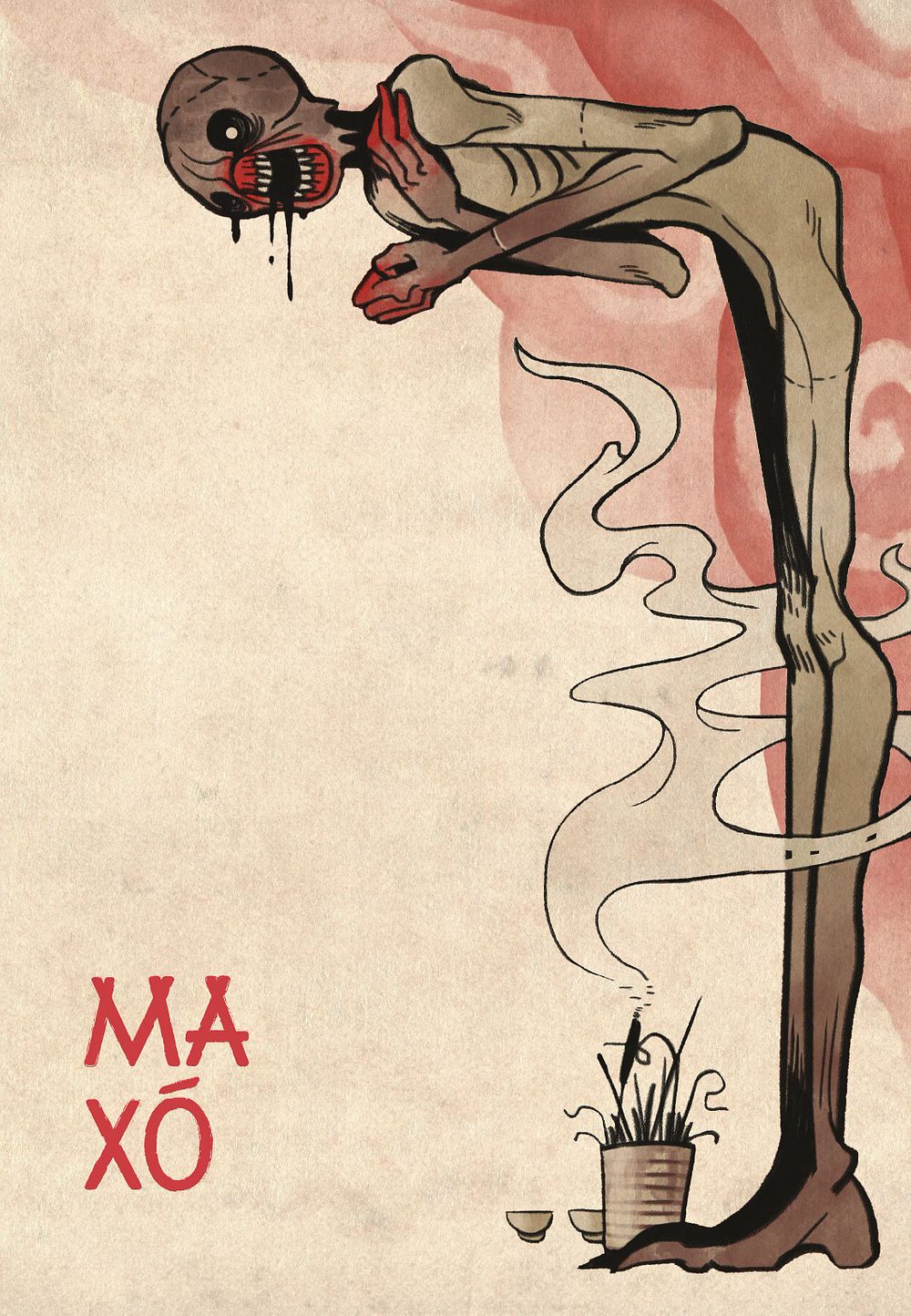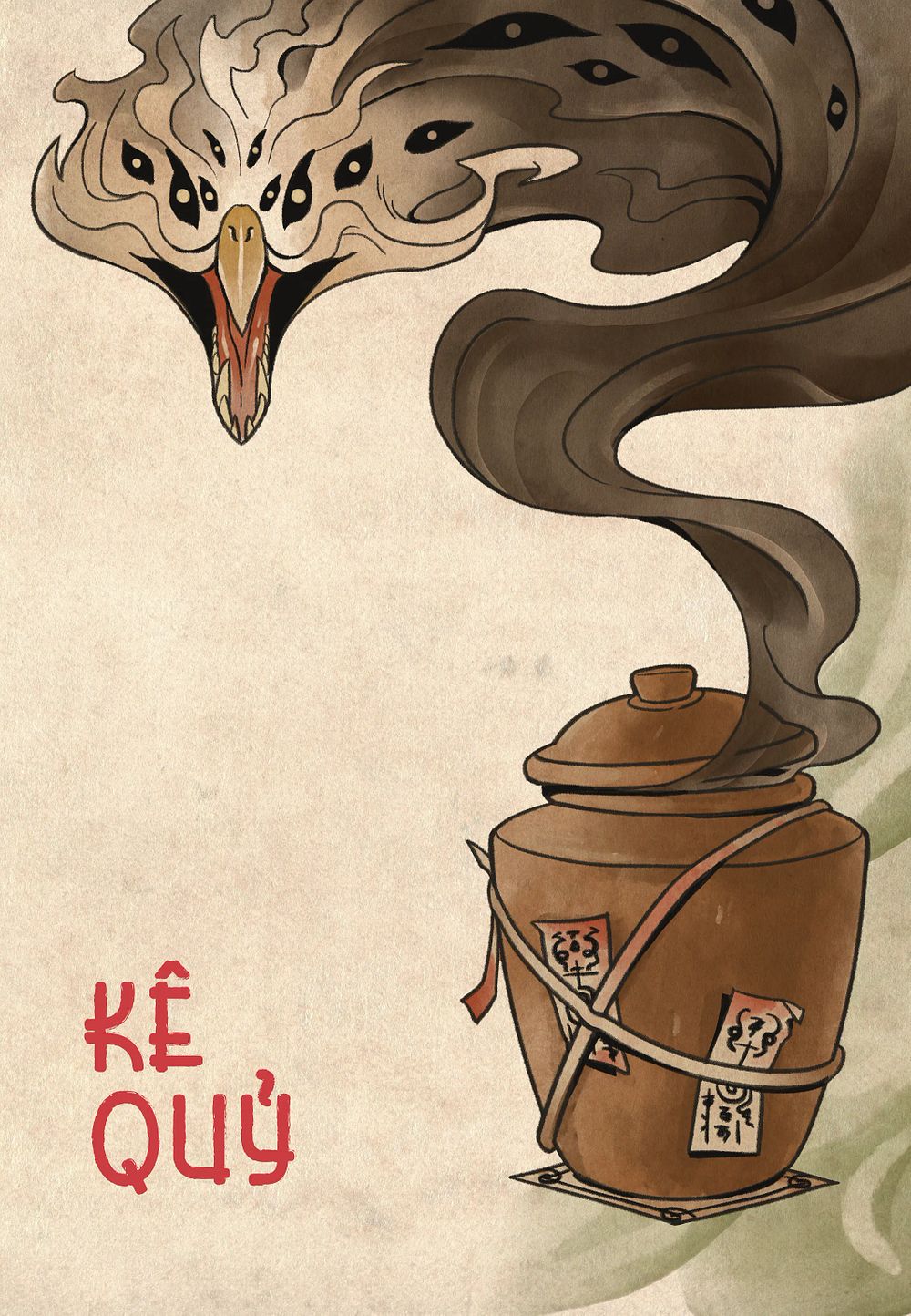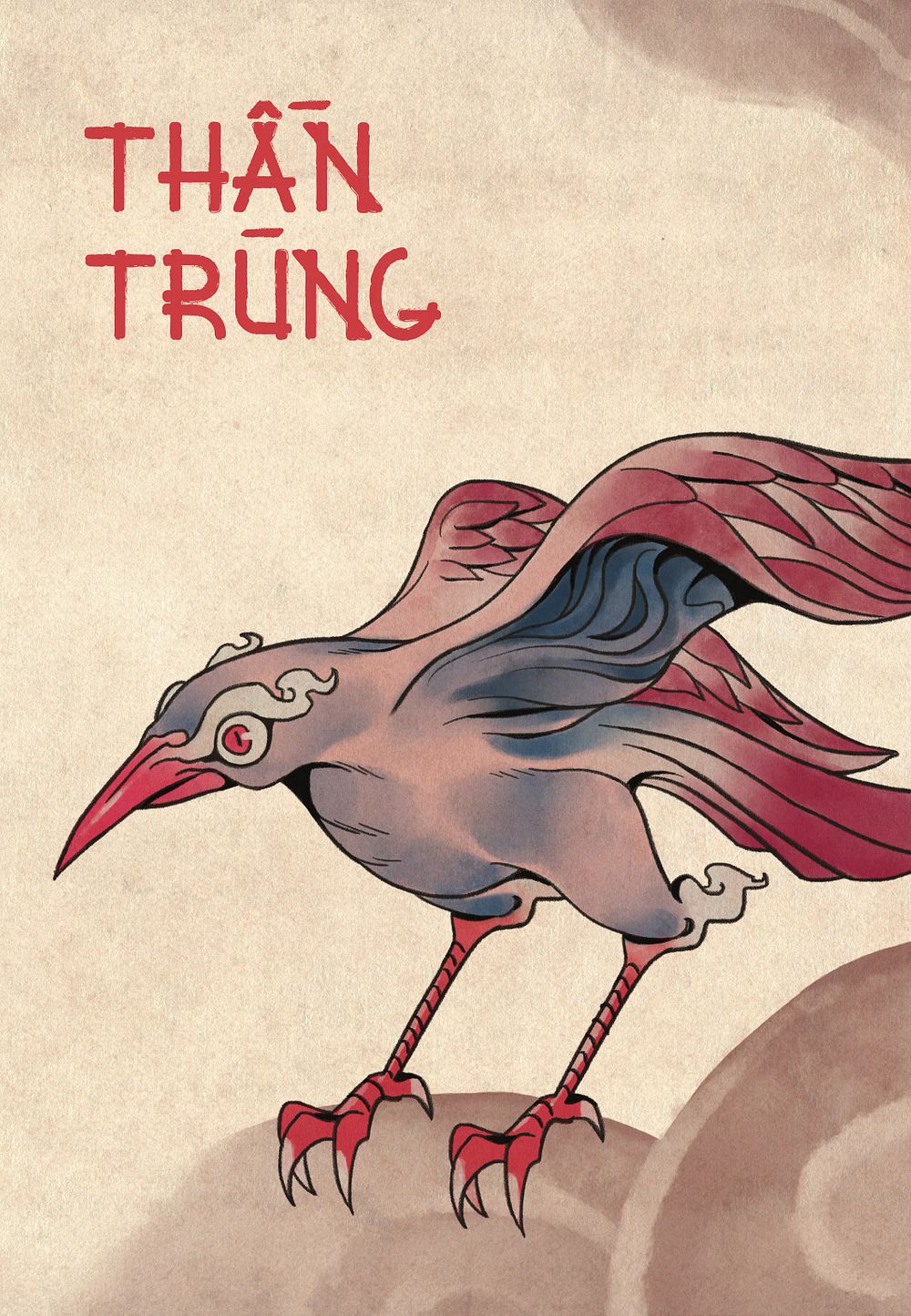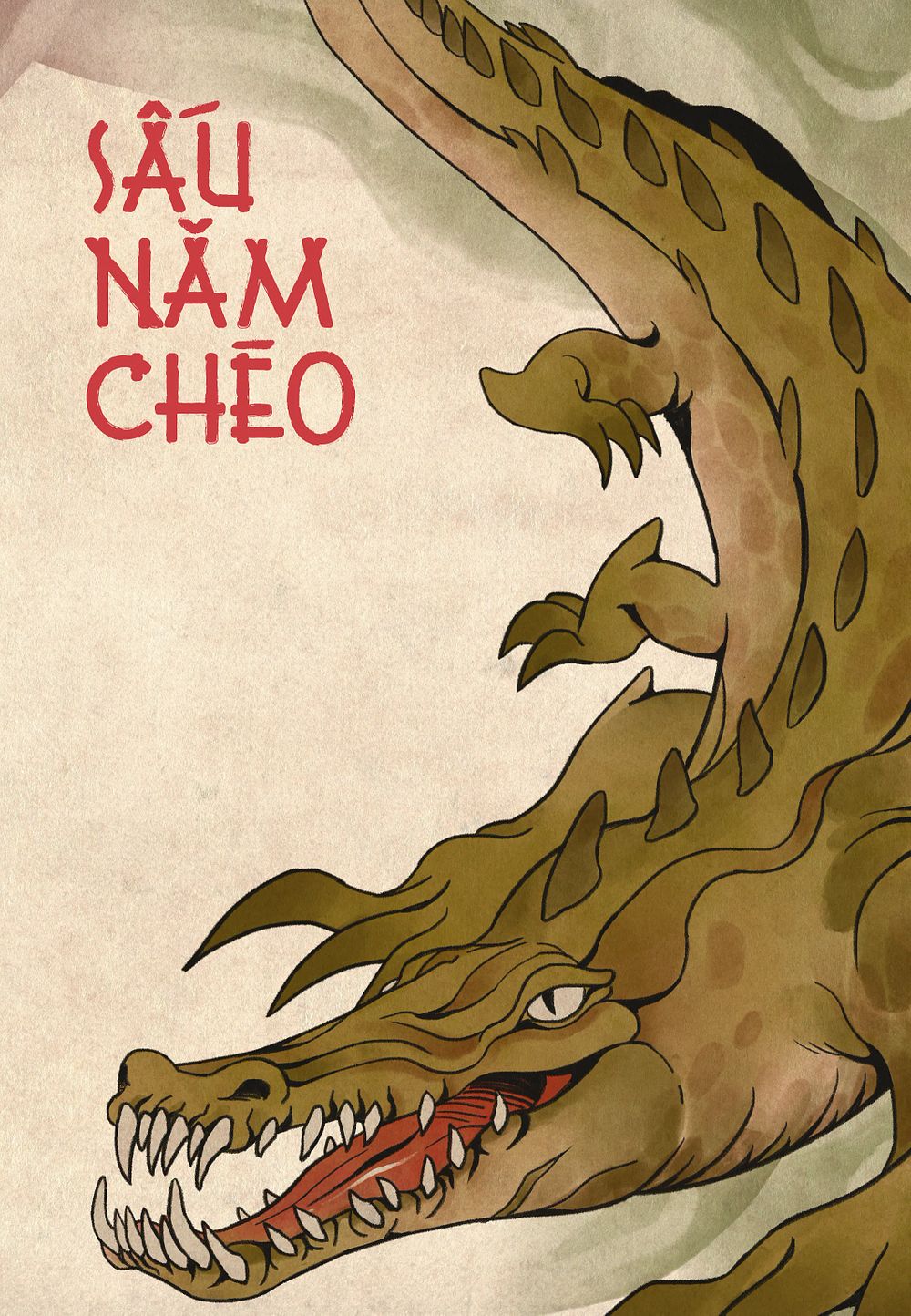Drawing from Vietnam’s myths and legends, a young artist has created a series of illustrations of figures that pay tribute to the country’s supernatural beliefs.
Inspired by the viral illustration project "Yêu-Ma-Quỷ-Quái" by renowned artist Vương Quang Vinh, Trần Xuân Lộc, a student at the Ho Chi Minh City University of Architecture, created his own re-imagination of Vietnam’s mythical creatures for a college capstone project.

An illustration depicting "Tinh Thuồng Luồng," a powerful sea monster said to have made appearances in Hai Duong during the reign of emperor Trần Minh Tông.
Despite having little time or access to reference sources, Lộc managed to complete 16 illustrations which have received considerable attention and praise on art forums. Each illustration is accompanied by annotated information outlining the creature’s origin, general description, and surrounding myths and legends. The project has now garnered more than 5,000 likes and 2,800 shares on its Facebook post.

This illustration is inspired by the myth of "Tinh Hạc Đen," which originated from the region of Thanh Hoa during the Ho Dynasty. Tinh Hạc Đen is a magical dark crane that has the ability to see the future. Having foreshadowed the royal troops' arrival at its lair, the crane was able to flee and escape the attack with ease.
"When we got the prompt for the assignment, many of my classmates chose to illustrate Japanese monsters, but few attempted to do the same for Vietnamese ones," Lộc said in explaining his decision to focus on local culture. As he scouted the internet, books, and religious scriptures, Lộc was amazed by how abundant and culturally significant Vietnam’s mythical folklore is. Yet not many people are aware of it because it’s mostly preserved through oral lore which is scattered, inconsistent and difficult to navigate.

"Tinh Đỉa" is a mythical creature that originated from Quang Nam and Phu Yen. According to legend, Tỉnh Đỉa is a leech-like beast that forced villagers to bring it a bride as a human sacrifice. On the day that the creature went to pick up the young maiden from the villagers, it suddenly collapsed in agony and succumbed to its death. Later, the villagers discovered that someone had secretly lined the path with soot and quicklime, which helped poison and defeat the beast.
“In Vietnamese folk belief, there are a great number of characters who are bestial spirits due to the widespread practice of animal worship, and there are a few spirits that fall more into the demon/ghost categories, but there really isn’t a clear distinction between the types. So when I made this illustration series, I had to read up a lot on Buddhist mythology to get the facts right,” said Lộc.

"Tinh Cây Ráy" is an ancient ayurvedic tree that absorbed the essence of heaven and earth to gain its supernatural power. The tree is believed to take two forms, one as a naked man and the other a naked woman, with both forms often intertwined. The myth of Tinh Cây Ráy is said to have originated from Ninh Hoa, Khanh Hoa.
Lộc said that he was fortunate to have had Vương’s original project as a point of reference. He also expressed his gratitude toward the senior artist for supporting the project after it was completed and published.
The young illustrator is now taking a keen interest in incorporating traditional materials in his art and is planning for a follow-up project to “visually present Vietnamese folktales.” Vương himself has invited Lộc to join the team of artists working together to create the sequel to "Yêu-Ma-Quỷ-Quái."

'Tinh Bò Rừng' is a bison-like creature that appears in the Mnong ethnic people's folktales.
"Young people are finally paying more attention to Vietnamese culture. I hope that my art can pique some of their interest and inspire them to learn more about local practices and beliefs," Lộc shared.
Check out more of Xuân Lộc's spooky, distinctive drawings below:










nổi bật nhất có lẽ là chuyện con Tinh ở xứ Hải Dương vào thời Trần Minh Tông.
[Images via Trần Xuân Lộc]














